It would be easy to blame the woes of the savoury pastries market on horsegate, but the reality is somewhat more complex.
The horsemeat scandal does appear to be a key reason for the near 7% decline in volume sales [Nielsen 52 w/e 12 October]. As Ginsters sales and marketing director Linda Evans says, the horsemeat scandal had an immediate effect on footfall in the savoury pastries aisles. “While we had a strong message to convey due to our heritage and commitment of only ever using British beef, consumers were generally avoiding shopping for products containing beef.”
But the category has also suffered as a result of rising costs, promotional pressure and changing consumer demand. That scorching summer didn’t help much, either.
Read The Grocer’s full Top Products Survey.
Suppliers of premium products claim the scandal affected them less than those closer to the value end of the market. “Some were still dealing with the fall-out and supply-chain reorganisation months later,” says Tristan Hogg, co-founder and MD of Pieminister.
Own label fell even more markedly than brands - value was down 0.7% on volumes down 8.8% . But mainstream branded ranges have come under more pressure from higher tier own-label ranges, particularly in chilled. “These present strong competition to undifferentiated ‘standard’ brands,” adds Hogg.
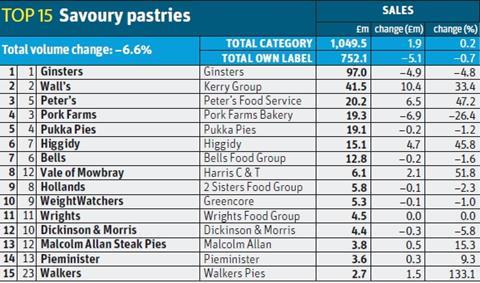
“Retailers are increasingly focusing on own-label products within the category and in doing a lot of deep-cut promotions,” explains Wayne Greensmith, MD at Pukka Pies, which has dipped in value and volume. “It’s up to brands to demonstrate our enduring quality and to drive the category through relevant innovation and marketing.” He promises Pukka Pies will be launching new products and marketing in 2014.
One mainstream brand bucking the trend is Wall’s. Sales of the savoury pastries range launched by Kerry Foods in 2009 have continued to soar - this year breaking through the £40m barrier. Kerry says it’s enjoyed strong growth in the convenience and grocery channels.
Category sales have also been hit by the resurgence of chilled ready meals driven by ‘dine-in’ meal offers, suggest some suppliers. It’s not so much the occasion as shelf space that is being stolen from the pies category.
Ginsters plans to encourage more affluent consumers back into the sector by communicating the brand’s use of 100% British pork, and has partnered with agency M&C Saatchi to launch a £4m multimedia advertising campaign in 2014.
According to Nielsen, the proportion of products sold on deal has risen from 37.5% to 39.2% year-on-year. Within that, says Ginsters, promotions have moved away from half-price deals towards round-pound offers. Increased activity has also mitigated some of the effect of rising commodity costs, particularly for flour and meat.
“We only ever increase our prices when we absolutely have to, and the input cost increases we have experienced are exceptional,” says Pukka’s Greensmith. “We have had to put through a price increase but are absorbing much more than we are passing on.”
Also a problem for some in the category are dairy price hikes. “Because we produce all-butter pastry and shy away from any substitutes, we’ve been hit hard by what is a 31% year-on-year increase,” says Hogg.
The microwave snacks category is facing similar cost issues - in particular increases in meat and wheat prices. “Due to pressure on consumers’ disposable income, there has been little room to increase prices so we have had to absorb these as a business,” says Kepak marketing director John Armstrong.
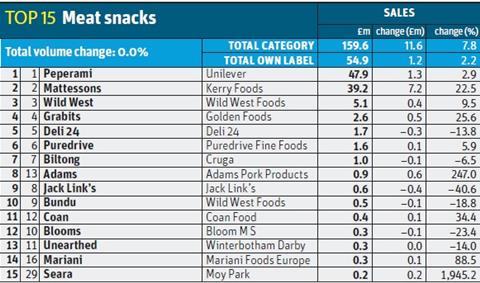
Like savoury pastries, the microwave snacks category has been affected by the horsemeat scandal, with the strong growth of the Rustlers brand in recent years having slowed to just 1.2% on flat volumes. “We suffered about a month of reduced sales, which was frustrating since we had a completely clean bill of health,” says Armstrong.
There have been new entrants to microwave snacks, but some of these have failed to gain a foothold. “We welcome competition that expands the category, and gives consumers real choice, but me-too products don’t help anybody in a low-growth environment,” says Armstrong.
Kepak will be supporting Rustlers in 2014 with increased marketing investment and an “ambitious” NPD programme, and also promises another “big year” for its Zugo’s brand, which has soared 14.9% on volumes up 26.3%, thanks to increased distribution and promotional activity.
With unit prices in meat snacks up 17.7% - more than any other category in the Top Products Survey - deals have been essential to the £10m growth of Kerry Foods’ Mattessons, but the brand’s Fridge Raiders have soared in value by tapping into the after-school snacking market and through the launch of sharing bags and its Hank Marvin ad push.

The meat snacks category has grown 7.8% by value, with branded products outperforming own-label, which accounts for about a third of the category. An overall decline in volume sales is entirely down to own-label lines, with volume sales of branded meat snacks up 13.7%.
“Meat snacking is one of the fastest growing segments within cooked meats,” says a Kerry Foods spokesman. “It has been a phenomenal year, where Fridge Raiders has spearheaded this growth because of its convenient format and appealing taste.” Marketing activity for the brand has included a tie-up with celebrity gamer The Syndicate Project that helped Fridge Raiders gain more than 143,000 Facebook fans.
Read The Grocer’s full Top Products Survey.
Top Launch: Heinz Pastries Peter’s Food Service
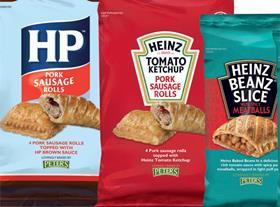
Combining brands such as Heinz Beanz and HP Sauce with savoury pastries is surely a match made in heaven (or, more accurately, Peter’s HQ in South Wales). Rolled out this spring, the line-up includes Beanz-branded savoury slices, and sausage rolls topped with Heinz Tomato Ketchup, HP Brown Sauce or Heinz Ploughman’s Pickle. Heinz has a strong recent pedigree of extending into other categories, and it’s hard to believe the brand won’t be a success here too.



![XOXO-Product-Shot[ALL FLAVOUR]-Sky-1920x1080](https://dmrqkbkq8el9i.cloudfront.net/Pictures/274x183/4/9/2/355492_xoxoproductshotallflavoursky1920x1080_806584_crop.jpg)



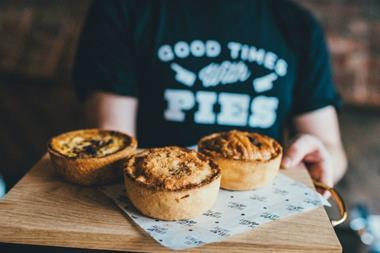
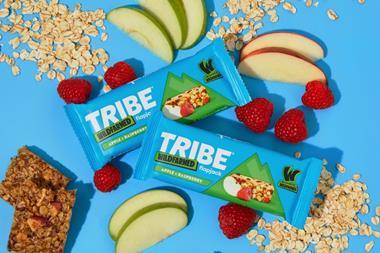
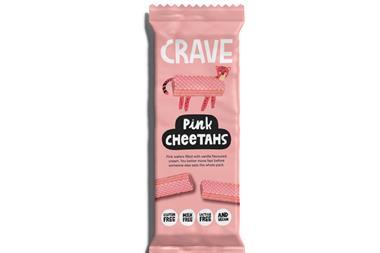
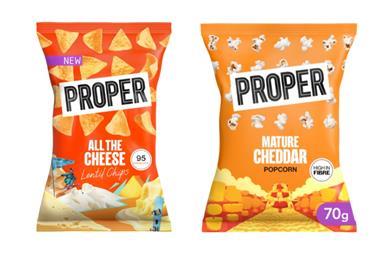
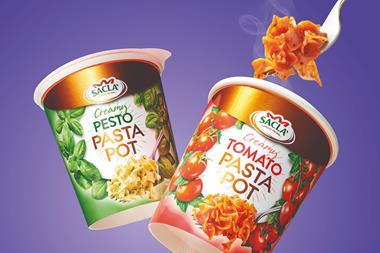
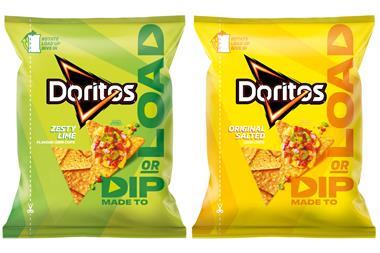






No comments yet